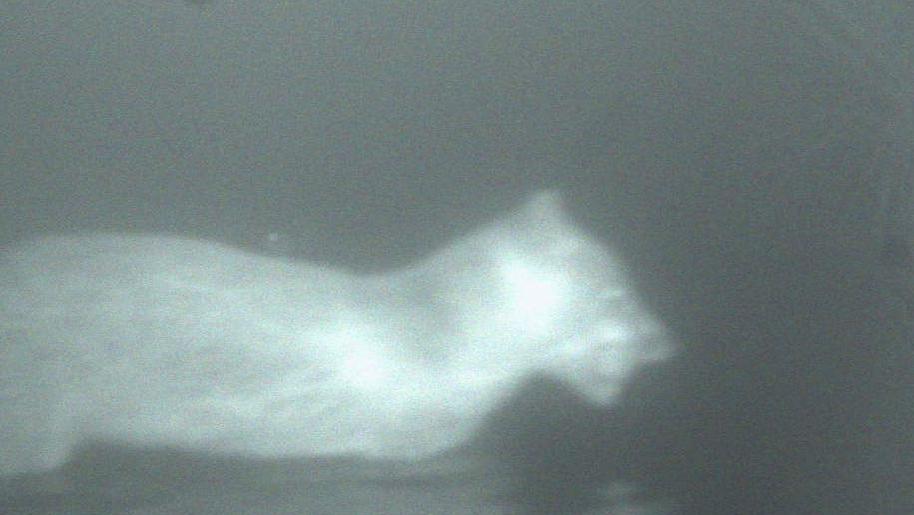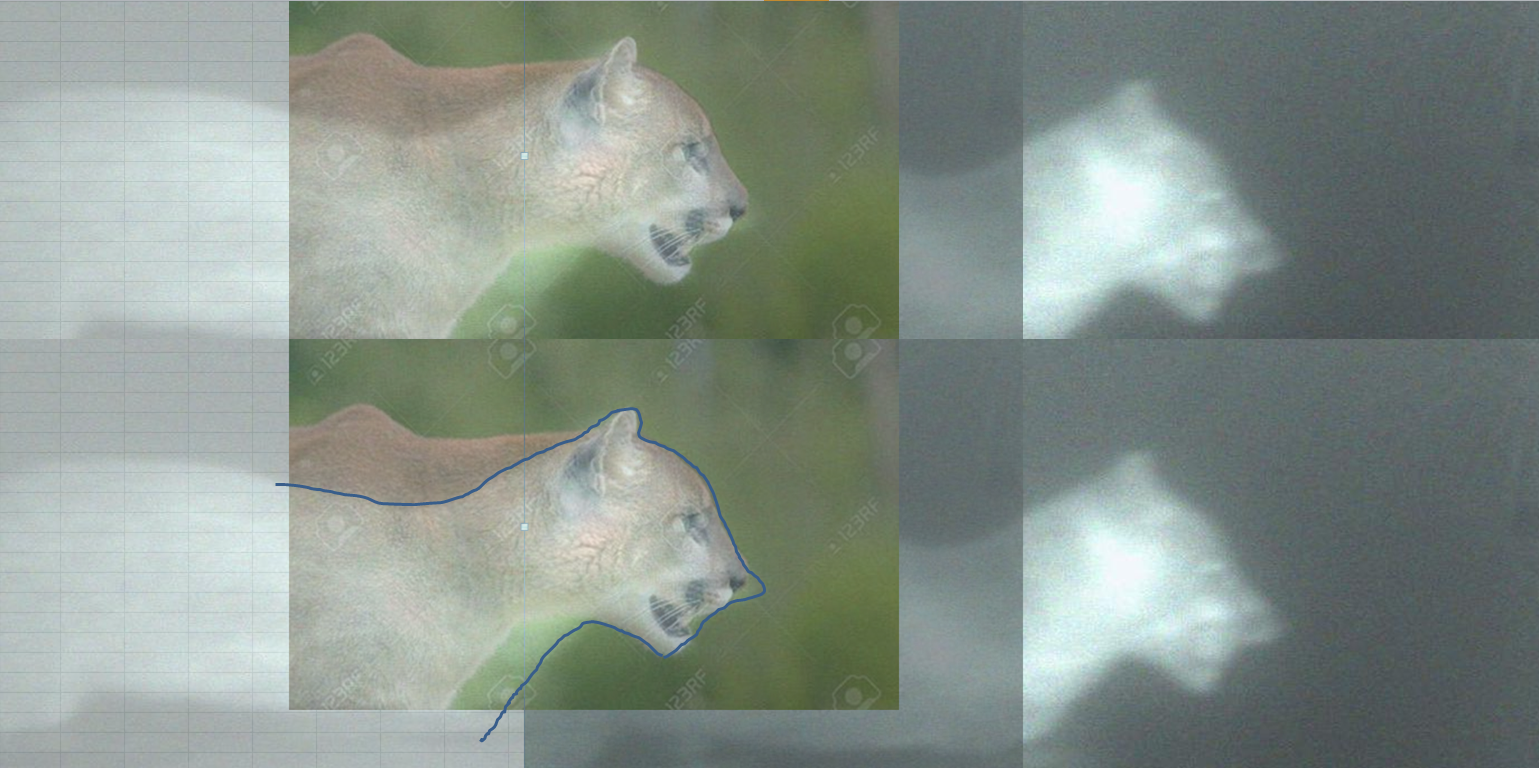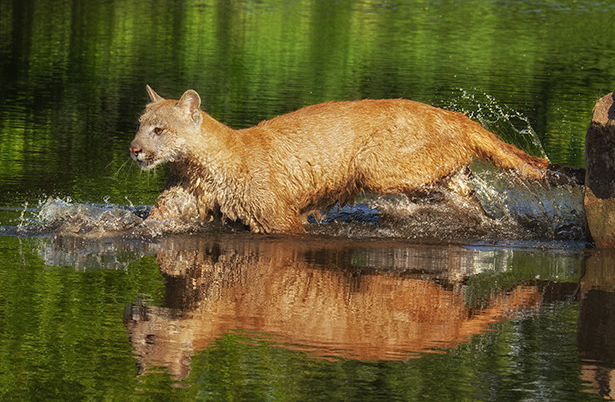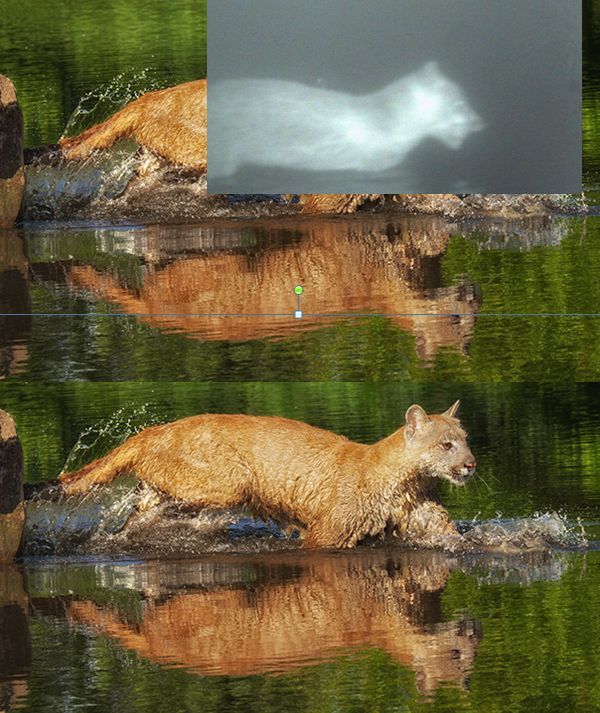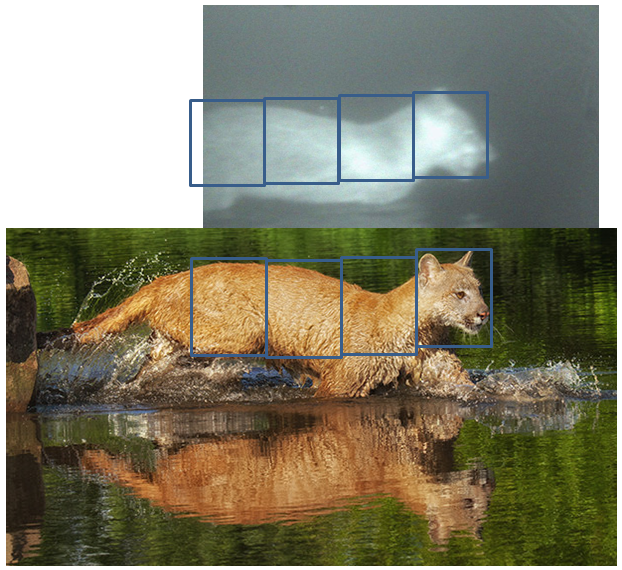August 2016 camera trap big cat
Overview
The Herald Sun has published an article about about big cat sightings, both in Victoria and interstate within Australia. The headline image shows "night vision" - presumably a camera trap - image of what appears to be a big cat.
Click to enlarge.
The Herald Sun, under Leader Community news, reports this picture as "Picture: Supplied" and later notes "A VICTORIAN man has come forward with a night image of what he believes is a big cat sighted in West Gippsland. The man, who did not want to be named, said the photo was taken last August and shows what appears to be a large puma-like cat wading through water."
You can see in the above image that the legs are obscured by the water referred to.
Prospective identifications
Although one early commentator in a Facebook group suggests this may be a fox carrying an item in its mouth, a respondent noted the animal's ears are too short for a fox.
A second suggestion was that this might be a North American cougar/puma/mountain-lion.
I have put together a super quick overlay between two images - the above night vision photo and a stock image attributed to "designpics" of a cougar in similar pose, for the purpose of researching the similarity between these two animals.
Click to enlarge
In producing this overlay I resized (enlarged) the stock image until the three points reflecting the tip of the ear, the top end of the muzzle and the chin were equally overlaid. I think the slightly different posture between animals explains the difference in shoulder (showing, in the stock image, but not showing in the night vision image). The relative proportions between ear, muzzle thickness and muzzle length are near-identical in my opinion.
Open questions
Some open questions remain.
Is this in Australia?
At this early stage there is no way of verifying the night vision image was taken in Australia. At the moment, this is being taken at face value.
Does a matching silhouette imply identical species?
Two different species can conceivably give similar silhouettes. When comparing silhouettes or outlines, less importance should be given to things such as ears - which are moveable - and more importance should be given to body proportions. In this example, the height of the muzzle should be pretty fixed with a side on view. The perceived length of the muzzle can be affected by the animal turning its head slightly left or right. However in this case both animals appear fairly straight on. Under these circumstances, if the muzzle height is scaled up to the same size between both images, then if the muzzle length matches, or, for another example, if the distance from muzzle tip to base of the ear is near-identical, there is more likelihood the species are similar. The caveat here is that we may find if we evaluate some other species - such as a feral domestic cat - that it too shows similar body proportions. The above overly takes one look at one species - more comparisons should be made before drawing definitive conclusions.
Does colouration match?
It is important to note that night vision imagery is based on infrared light, and not visible light - hence there are no 'black' markings near the camera trap animal's eye, mouth or nose. In contrast, these would be visible in a daylight shot of the same animal. A lack of black markings in night vision imagery does not mean the animal lacks black markings when viewed under visible light. In other words - nothing should be assumed about animal colouration when viewing a night vision image taken using infrared light.
Does the nose tip match?
One mismatch between animals is that the mystery animal's nose tip appears to extend further than in the stock photo. This could conceivably be due to motion bluring or angle of viewing (although angle of viewing seems unlikely).
Don't cougars always have visible shoulders?
One online commentator notes that cougars at rest have humps above their front legs, correlating to the animal's shoulders. However the following image shows a cougar - traversing water (as is the mystery night vision animal) - where these humps are not visible. The lack of shoulder humps does not exclude this animal from being a cougar.
Click to enlarge.
Photo by Debbie Dicarlo on flickr.
Is the body length proportional for head size?
Another question posed in an online discussion group is whether the body length is too short for the head size, precluding pumas.
Using Debbie's photo in a montage with the night vision animal it may be fair to say the body length does appear marginally less than expected, in comparison to head size, but not by much.
Click to enlarge.
Photo by Debbie Dicarlo on flickr.
Notable differences here are that the cougar in Debbie's photo appears not to be as square-on to the camera as the mystery animal. The age of each animal is unknown. At time of writing I am not aware whether body proportions change at different ages for cougars as they do for humans, for example. The near hind leg in Debbie's photo is raised mid-step, whereas the mystery animal's near hind foot appears not to be raised. These minor discrepancies may have an impact on this comparison.
24/4/17 addition:
The Cougar Rewilding Foundation has published a diagram illustrating the following body proportions for cougars and domestic cats:
- head to body length
- head to height
A quick measure of the above image by Debbie Dicarlo against the mystery animal reveals there is not too much difference in the head to body length ratios:
However it is not clear from the illustration as to exactly where the head measurement ends, we don't have the tail end of the mystery animal - we can only infer - and we cannot compare the height ratio due to the water. At a glance the mystery animal's head and neck appear heavier set than the cougar's. However this appearance may be due to the shadow on the cougar's throat. Taking only the silhouette and bearing in mind the night vision does not reflect visible colour, the appearance would not be too dissimilar.
Conclusion
Despite the above open questions, this could be the most substantive evidence suggesting there may be a big cat presence in Australia. This has not been an exhaustive search for matching species but does show that the similarity to a cougar is notable.
My conclusion to this point is that the head appears similar to a cougar but the head to body length ratio may be out. That is, the head may be too large for its body length for it to be a cougar. It may still match a cougar as it seems to with Debbie Dicarlo's photo. The appearance of the animal in her photo appears to be the exception though, rather than the norm. Whilst the mystery animal photo remains inconclusive, its circumstances warrant further investigation.
What do you think?
